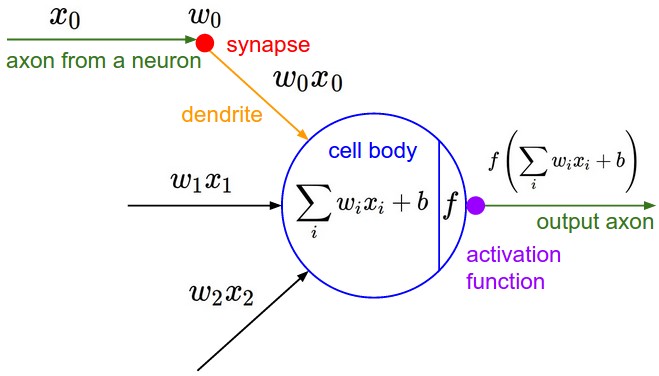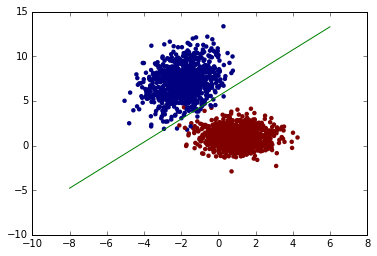1
2
3
4
5
6
7
8
9
10
11
12
13
14
15
16
17
18
19
20
21
22
23
24
25
26
27
28
29
30
31
32
33
34
35
36
37
38
39
40
41
42
43
44
45
46
47
48
49
50
51
52
53
54
55
56
57
58
59
60
61
62
63
64
65
66
67
68
69
70
71
72
73
74
75
76
77
78
79
80
81
82
83
84
85
86
87
88
89
90
91
92
93
94
95
96
97
|
from __future__ import print_function
from __future__ import division
import numpy as np
import cPickle as pkl
from generate_data import generate_data, plot_data
__author__ = 'wangzx'
class Perceptron(object):
""" A Perceptron instance can take a function and attempt to
``learn`` a bias and set of weights that compute that function,
using the perceptron learning algorithm."""
def __init__(self, inputs):
""" Initialize the perceptron with the bias and all weights
set to 0.0. ``inputs`` is the input to the
perceptron."""
num_inputs = inputs.shape[1]
self.num_inputs = num_inputs
self.bias = 0.0
self.weights = np.zeros(num_inputs)
self.inputs = inputs
def output(self, x):
""" Return the output (0 or 1) from the perceptron, with input
``x``."""
return 1 if np.inner(self.weights, x)+self.bias > 0 else -1
def learn(self, y, eta=0.1, max_epoch=100):
self.bias = np.random.normal()
self.weights = np.random.randn(self.num_inputs)
number_of_errors = -1
epoch = 0
while number_of_errors != 0 and epoch < max_epoch:
number_of_errors = 0
epoch += 1
for i, x in enumerate(self.inputs):
y_pre = self.output(x)
if y[i] != y_pre:
number_of_errors += 1
self.bias = self.bias + eta*y[i]
self.weights = self.weights + eta*y[i]*x
def predict(self, X):
res = [self.output(x) for x in X]
return np.asarray(res)
def test():
feat = pkl.load(open("data/train_X.pkl", 'rb'))
y = pkl.load(open("data/train_Y.pkl", 'rb'))
y[y==0] = -1
test_feat = pkl.load(open("data/test_X.pkl", 'rb'))
test_y = pkl.load(open("data/test_Y.pkl", 'rb'))
test_y[test_y==0] = -1
pla = Perceptron(feat)
print("Begin fit training data")
pla.learn(y, eta=1)
y_prd = pla.predict(test_feat)
score = np.sum(y_prd == test_y) / y_prd.shape[0]
print("Test accuracy is %f" % score)
def test_gdata():
mean = [[-2,7], [1,1]]
cov1 = [[1,0.5], [0.5, 3]]
cov2 = [[1,0], [0,1]]
g_data = generate_data(mean, [cov1, cov2])
X = [f for f, t in g_data]
X = np.asarray(X)
y = [t for f, t in g_data]
y = np.asarray(y)
y[y==0] = -1
pla = Perceptron(X)
print("Begin fit training data")
pla.learn(y, eta=1, max_epoch=300)
y_prd = pla.predict(X)
score = np.sum(y_prd == y) / y_prd.shape[0]
print("Test accuracy is %f" % score)
border_line(pla, g_data)
def border_line(pla, g_data):
b = pla.bias
w = pla.weights
x = np.asarray([[-8, 6]])
y = -(w[0]*x + b) / w[1]
plot_data(g_data, np.concatenate((x, y)).T)
if __name__ == "__main__":
pass
|


